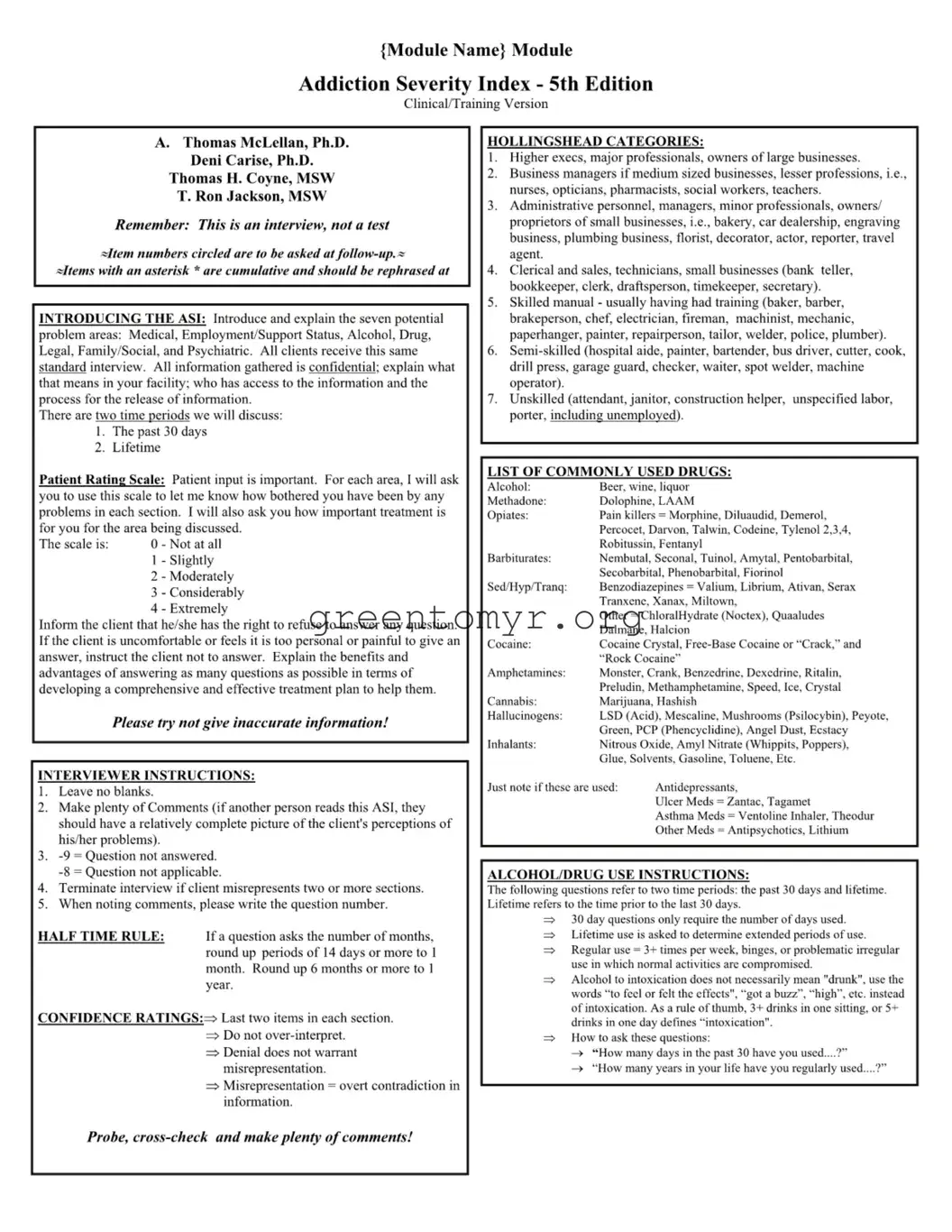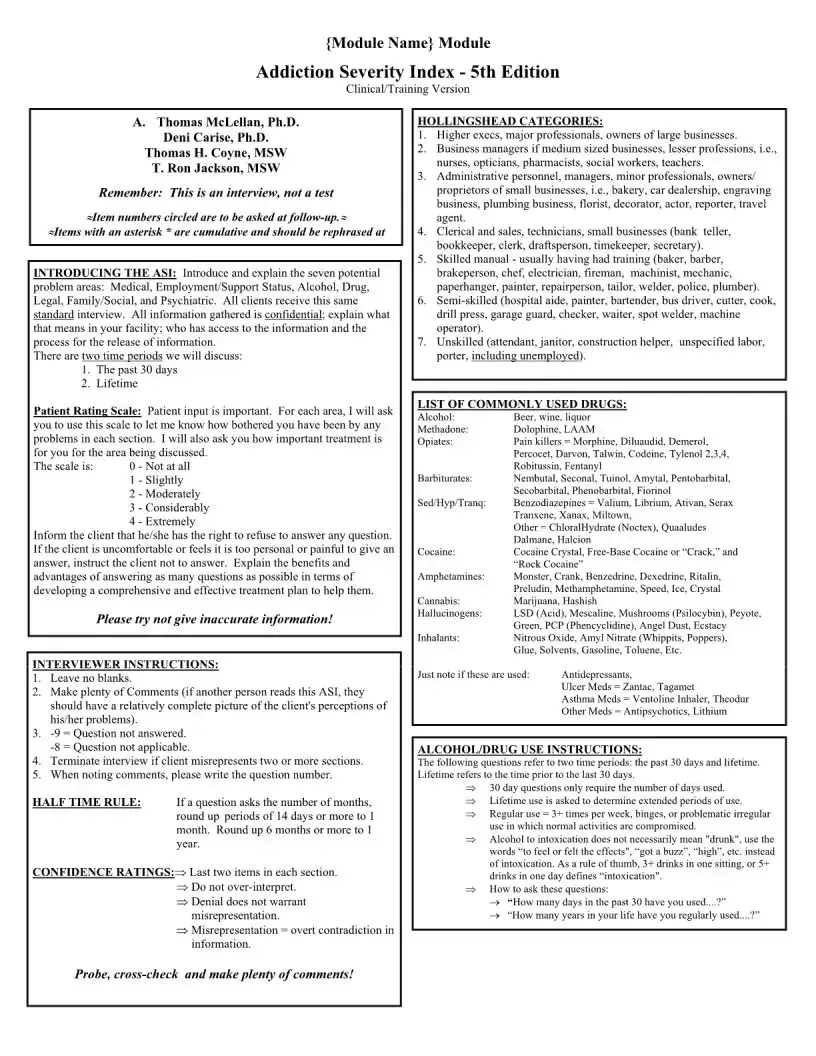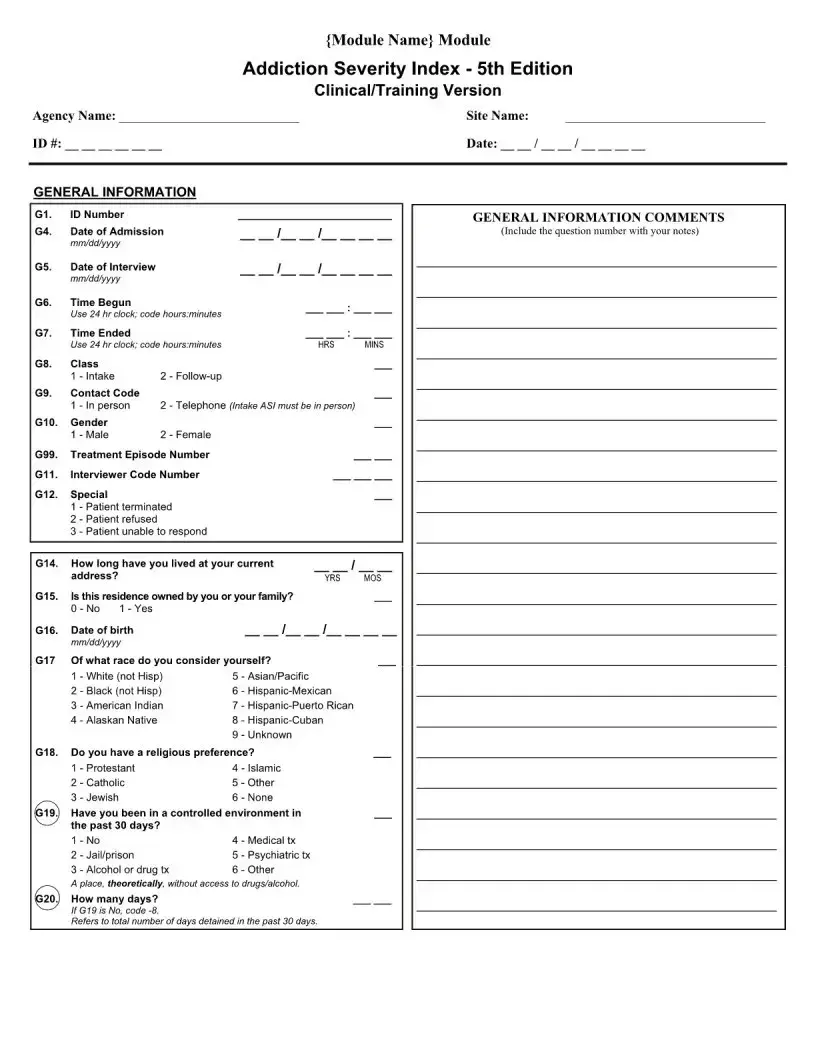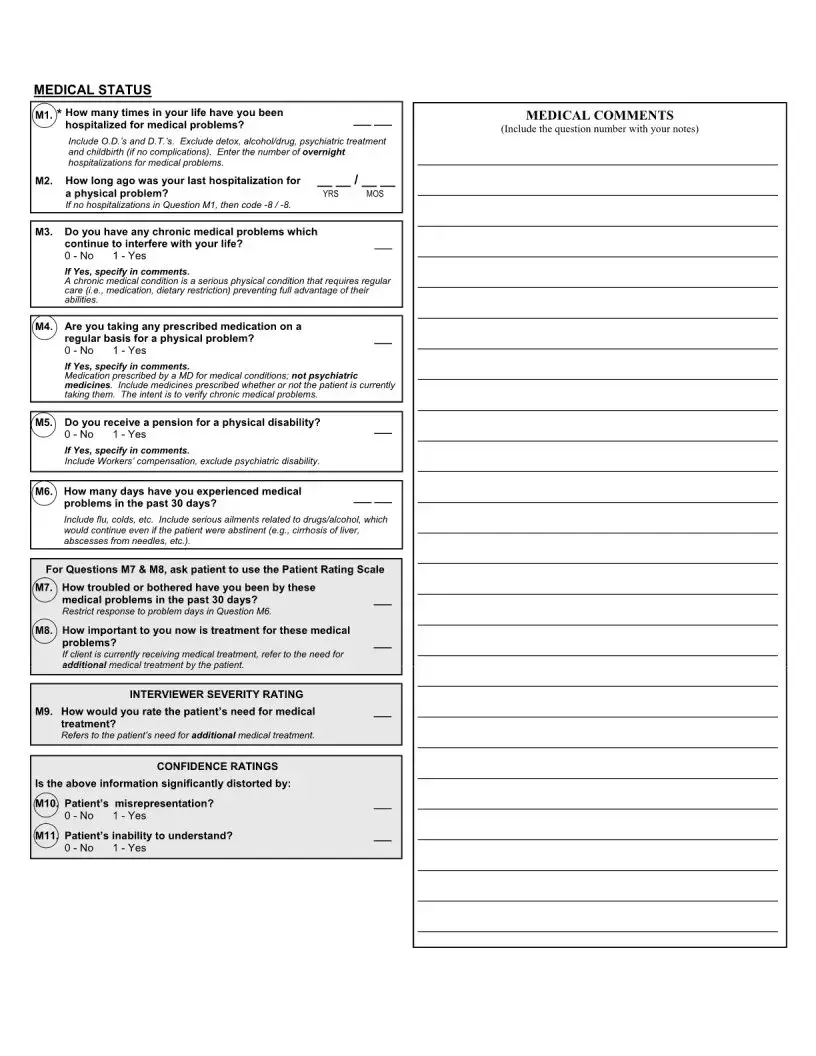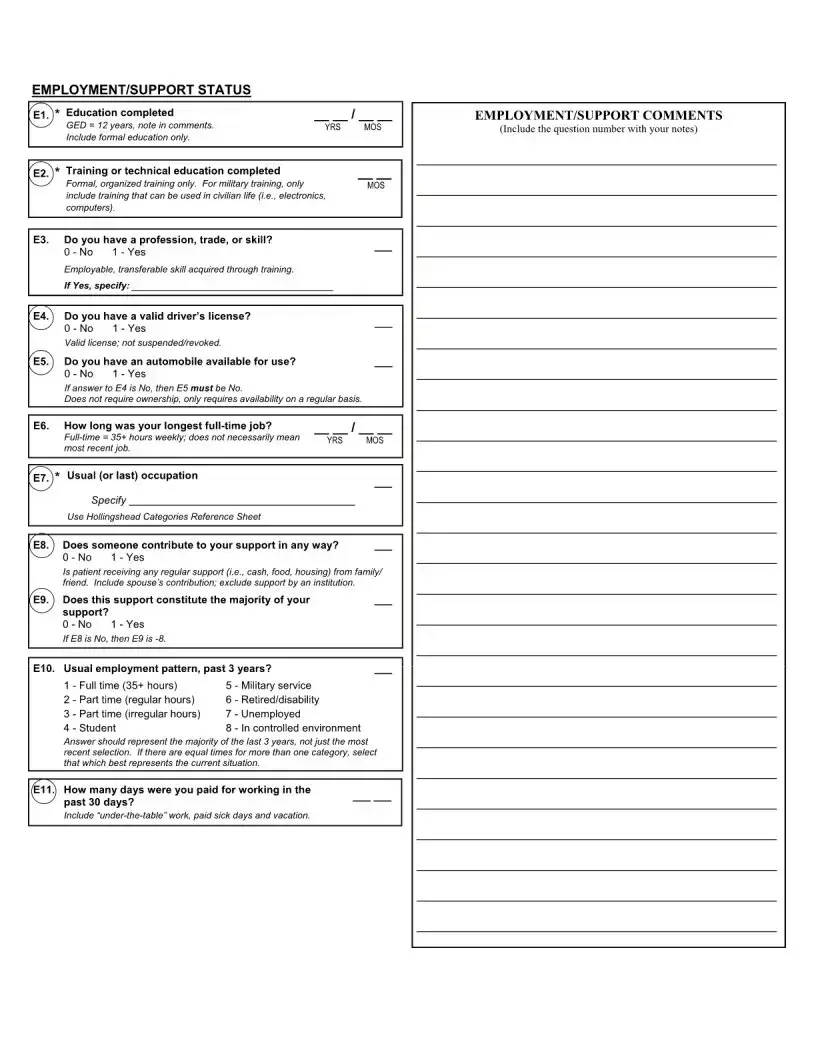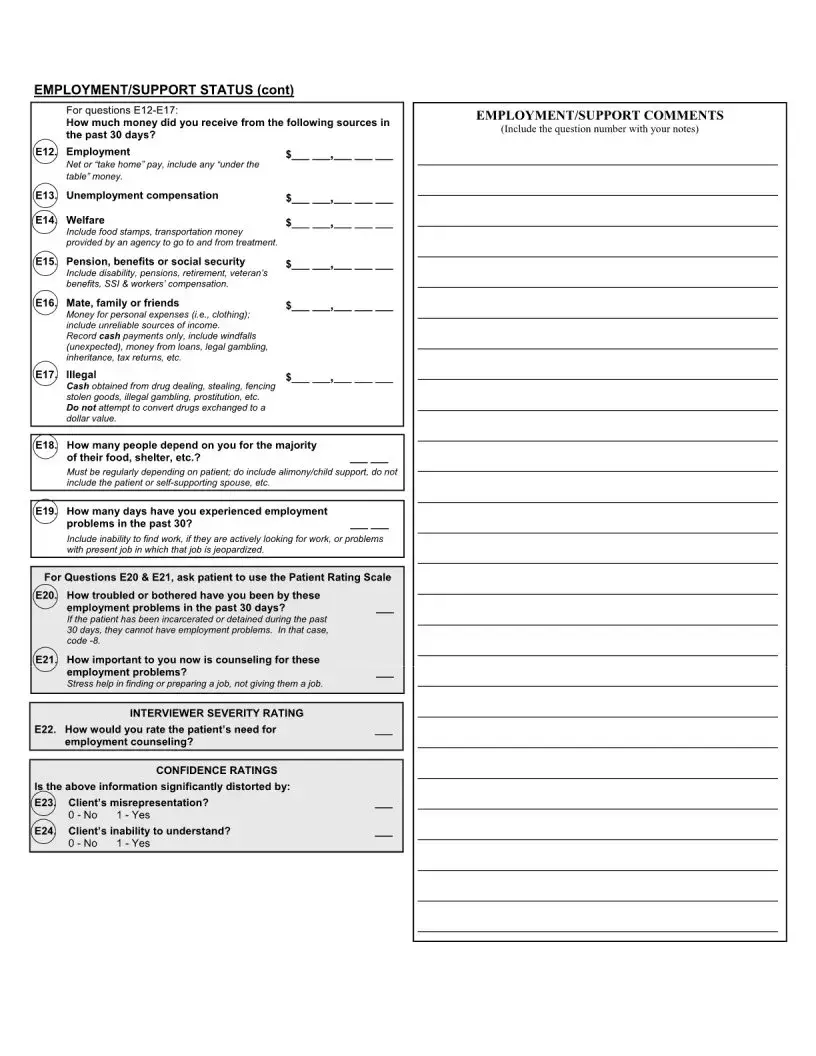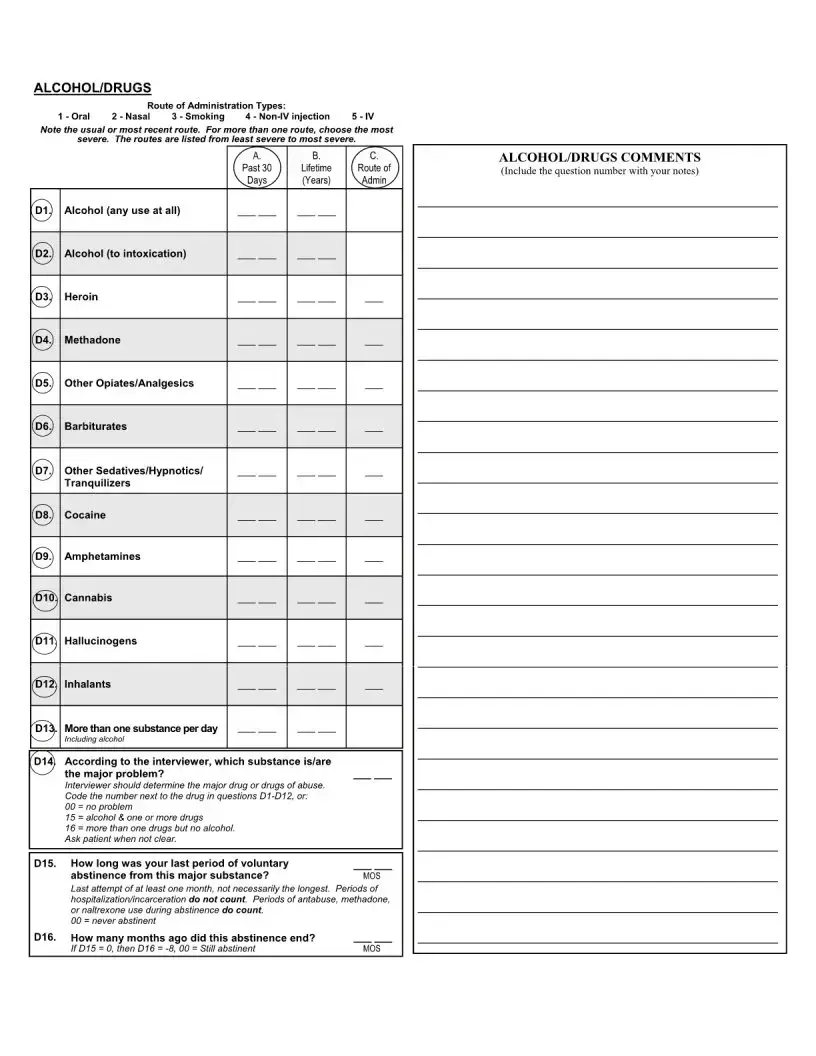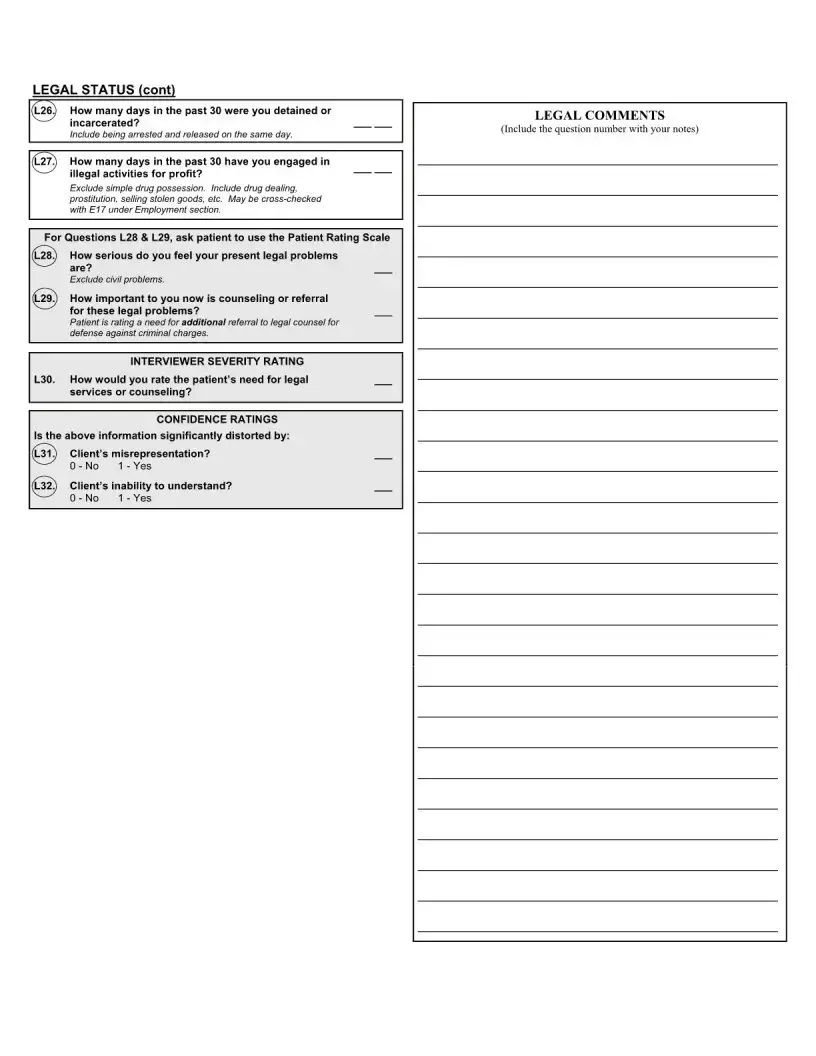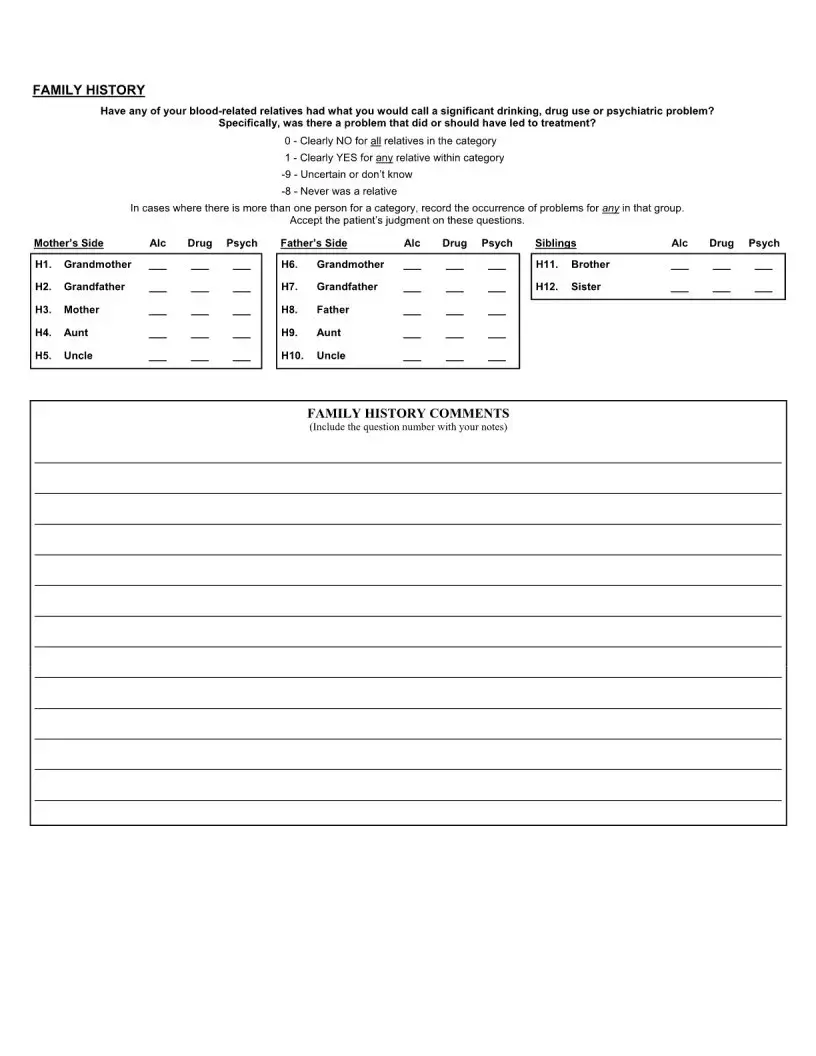Filling out the Addiction Severity Index can be a crucial step in understanding one's challenges and determining the right course of treatment. However, several common mistakes may arise during the completion of the form. Recognizing these errors can improve accuracy and ultimately enhance the effectiveness of the treatment plan.
First, numerous individuals leave blank sections. The form emphasizes the importance of providing answers for every item. **Leaving blanks can create gaps** in understanding a client’s situation, impacting treatment development and outcomes. Full disclosures, even to painful questions, are vital for effective intervention.
Second, respondents often misinterpret the lifetime questions. Many focus solely on the past 30 days, neglecting the need for comprehensive lifetime information. This oversight limits the ability to see long-term patterns that could affect recovery.
Third, some people underestimate the severity of their substance use, leading to skewed responses. The instructions specify using frequency and situations rather than subjective terms such as "occasionally" or "sometimes." **This could result in an inaccurate picture of a client’s addiction severity**, limiting the application of appropriate solutions.
Another frequent error involves not documenting additional comments. The form instructs interviewers to provide context and explanation for answers. Comments enable others to better understand the client's perspective and history, making it critical to note observations related to question responses. Without this context, the form may lack depth and precision.
Fifth, clients sometimes do not utilize the provided Patient Rating Scale effectively. **Ratings matter** when indicating how troubled one feels by their issues, as well as the importance of treatment. Improper scale usage can mislead treatment providers, which is detrimental to both assessment and planning.
Additionally, individuals might incorrectly indicate their longest job tenure or employment patterns. This section requires clarity to gauge stability and aid in crafting adequate referrals for job-related assistance. Misrepresentation here may leave experts unprepared to address employment-related issues effectively.
Lastly, neglecting to update any recent changes in lifestyle factors, such as housing or medical conditions, can also be problematic. Improvements or challenges in these areas are critical as they directly influence treatment outcomes. Accurate and current information lays the groundwork for a tailored and responsive treatment strategy.
Awareness of these eight common mistakes when completing the Addiction Severity Index form is essential. Addressing these pitfalls can significantly enhance the form's reliability and support a more effective treatment process for individuals seeking help.
